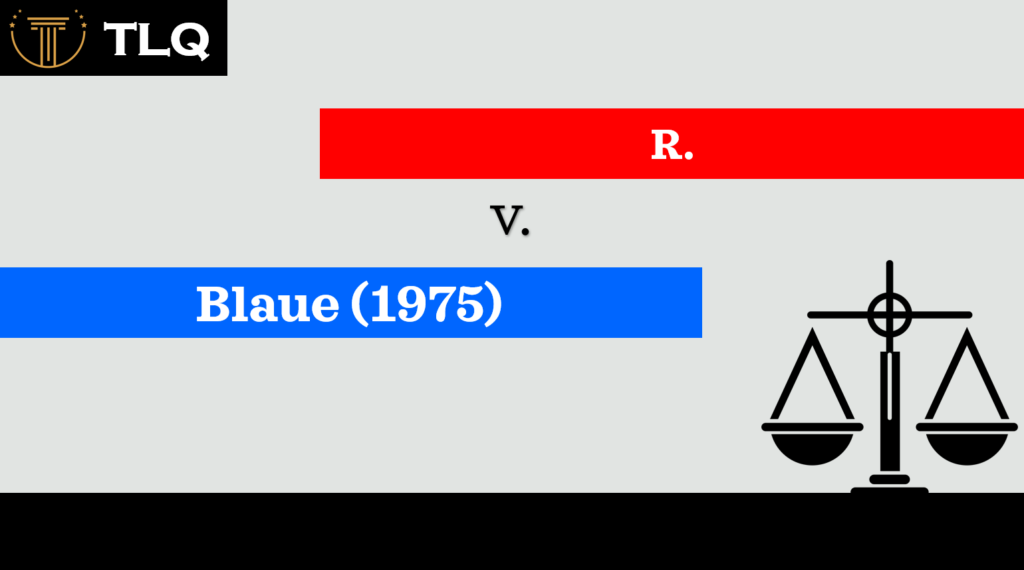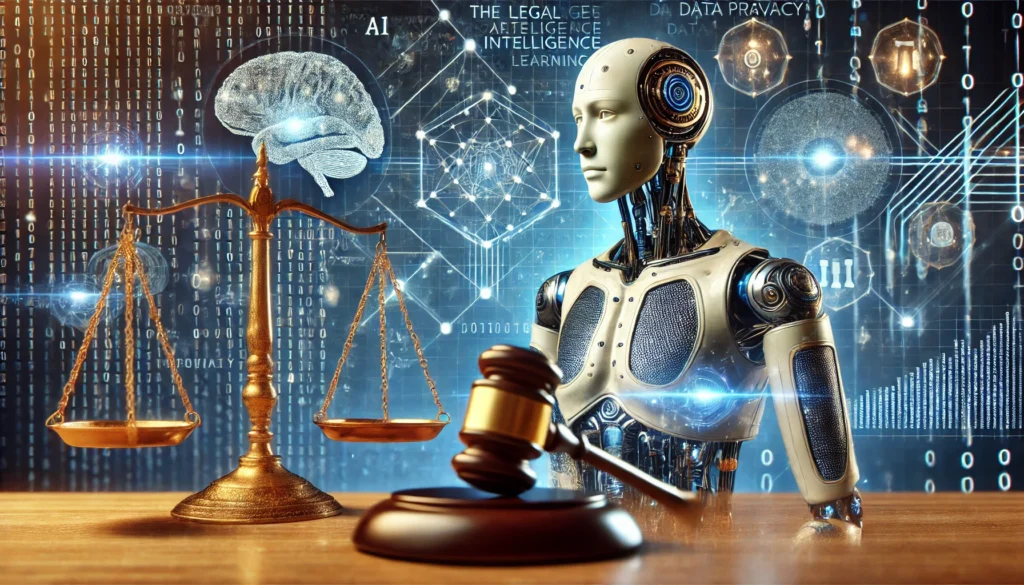Published On: 13th September, 2024
Authored By: Arshita Vashisht
University of Petroleum and Energy studies
Introduction
The case of S.R. Bommai v. Union of India[1] stands as a seminal judgment in Indian constitutional law, profoundly shaping the interpretation and application of Article 356 of the Indian Constitution. This 1994 Supreme Court decision, delivered by a nine-judge bench, set crucial precedents regarding federalism, the limits of central power, and judicial review of executive actions. The case arose from a series of controversial dismissals of state governments in the late 1980s and early 1990s, culminating in a comprehensive examination of the constitutional validity and scope of Article 356, which deals with the President’s Rule in states.
Historical Context and Background
The frequent and often controversial use of Article 356 to dismiss state governments has been a contentious issue in Indian politics since the 1960s. By 1989, Article 356 had been invoked over 75 times, often for political reasons rather than genuine constitutional breakdowns[2]. This pattern raised serious concerns about the misuse of constitutional provisions and the erosion of India’s federal structure.
S.R. Bommai was serving as the Chief Minister of Karnataka when his Janata Dal government was dismissed on April 21, 1989, under Article 356[3]. The dismissal was justified on the grounds that the government had lost its majority due to defections. Governor P. Venkatasubbaiah refused Bommai’s request to prove his majority on the floor of the assembly, instead recommending President’s Rule[4].
Bommai challenged this decision, first in the Karnataka High Court and then in the Supreme Court. Concurrently, similar dismissals of state governments in Meghalaya and Nagaland in 1988, and later in Madhya Pradesh, Himachal Pradesh, and Rajasthan in 1992, were also challenged[5]. These cases were clubbed together for a comprehensive review by the Supreme Court.
Key Legal Issues
The Supreme Court addressed several crucial legal issues in this case
- The scope and limitations of the President’s power under Article 356
- The justiciability of the President’s proclamation imposing President’s Rule
- The role of federalism in the Indian constitutional structure
- The parameters for judicial review of the use of Article 356
- The relevance of secularism in state governance
- The proper procedure for testing a government’s majority
Arguments and Contentions
The petitioners argued that:
- The power under Article 356 was being misused for political purposes rather than genuine constitutional breakdowns.
- The President’s satisfaction should be based on objective material and should be justiciable.
- Federalism is a basic feature of the Constitution and cannot be undermined through frequent impositions of the President’s Rule.
The Union Government contended that:
- The President’s satisfaction under Article 356 is subjective and not amenable to judicial review.
- The power under Article 356 is necessary to maintain the unity and integrity of India.
- The Constitution provides for a strong centre, and the use of Article 356 is consistent with this design.
- Judgment and Reasoning
The Supreme Court, in its landmark judgment delivered on March 11, 1994, laid down several crucial principles:
- Federalism as a Basic Feature: The Court recognized federalism as part of the basic structure of the Constitution. Justice P.B. Sawant observed, “The States have an independent constitutional existence and they have as important a role to play in the political, social, educational and cultural life of the people as the Union.”[6
- Limited Power under Article 356: The Court held that the power conferred by Article 356 is not absolute but conditional. Justice K. Ramaswamy stated, “Article 356 is an emergency provision but it cannot be used for the purpose of superseding the democratic process.”[7] The Court emphasized that this power should be used sparingly and only as a last resort.
- Judicial Review: The Court affirmed that the President’s proclamation under Article 356 is subject to judicial review. While the Court cannot examine the correctness of the material, it can scrutinize whether the material is relevant to the action. Justice S.R. Pandian noted, “The power of the Court to restore the government to office in case it finds the proclamation flawed, is necessarily implied in clause (3) of Article 356.”[8]
- Floor Test: The judgment emphasized that the proper place to prove a government’s majority is on the floor of the House, not in the Raj Bhavan (Governor’s residence). Justice J.S. Verma stated, “The assessment of the strength of the Ministry is not a matter of private opinion of any individual, be he the Governor or the President.”[9]
- Secularism: The Court held that secularism is a basic feature of the Constitution and that a state government pursuing anti-secular politics is liable to action under Article 356. Justice B.P. Jeevan Reddy observed, “Religious tolerance and equal treatment of all religious groups and protection of their life and property and of the places of their worship are an essential part of secularism enshrined in our Constitution.”[10]
- Burden of Proof: The Court held that the burden of proving that there exists a situation warranting the issue of proclamation under Article 356 rests on the Union Government.
Impact and Significance
The Bommai judgment has had far-reaching implications:
- Strengthening Federalism: By recognizing federalism as a basic feature of the Constitution, the judgment reinforced the federal structure of the Indian polity. This has led to more balanced Centre-State relations and has curbed the arbitrary dismissal of state governments[11].
- Limiting Central Power: The judgment imposed significant restrictions on the misuse of Article 356, making it harder for the central government to arbitrarily dismiss state governments. Since this judgment, the frequency of imposing the President’s Rule has decreased significantly[12].
- Enhancing Judicial Review: By affirming the Court’s power to review the President’s proclamation, the judgment expanded the scope of judicial review over executive actions. This has served as a crucial check on executive power[13].
- Protecting Democratic Processes: The emphasis on floor tests as the proper method to determine a government’s majority has helped protect democratic processes in states. This principle has been applied in numerous subsequent political crises[14].
- Secularism: The judgment’s emphasis on secularism as a basic feature of the Constitution has had significant implications for Indian politics and governance. It has provided a constitutional basis for challenging actions perceived as threatening India’s secular fabric[15].
Subsequent Developments
The principles laid down in the Bommai case have been applied and reaffirmed in several subsequent cases. In Rameshwar Prasad v. Union of India (2006)[16], the Supreme Court quashed the imposition of President’s Rule in Bihar, applying the principles from Bommai. Similarly, in Nabam Rebia v. Deputy Speaker (2016)[17], the Court relied on Bommai to reinstate the dismissed government in Arunachal Pradesh.
My Analysis of the Case:
The S.R. Bommai v. Union of India case stands as a landmark decision in Indian constitutional jurisprudence, profoundly reshaping the landscape of federalism, executive power, and judicial review. This pivotal judgment, delivered by a nine-judge bench of the Supreme Court in 1994, marked a significant shift in the interpretation and application of Article 356 of the Indian Constitution. By recognizing federalism as a basic feature of the Constitution, the Court established a robust constitutional shield against unwarranted central interference in state affairs, while still maintaining the delicate balance of India’s unique brand of cooperative federalism. The judgment’s assertion of judicial review over the President’s proclamation under Article 356 represented a bold step towards greater executive accountability, positioning the judiciary as a crucial check against potential misuse of power. However, this move towards judicial assertiveness has not been without controversy, with some critics arguing that it potentially oversteps into the executive domain. The Court’s emphasis on secularism as a basic feature of the Constitution was particularly significant in India’s diverse religious landscape, providing a constitutional basis for challenging actions perceived as threatening the nation’s secular fabric. Yet, this aspect of the judgment also raised complex questions about the extent of judicial intervention in matters of state policy on religious grounds. The insistence on floor tests as the proper method to determine a government’s majority has had far-reaching implications for Indian politics, helping to protect democratic processes but also potentially turning legislative proceedings into political spectacles. By placing the burden of proving the necessity of the President’s Rule on the Union Government, the Court significantly raised the bar for invoking Article 356, acting as a deterrent against frivolous use of the provision but potentially limiting the government’s ability to act swiftly in genuine emergencies. The practical impact of the Bommai judgment is evident in the noticeable decrease in the imposition of the President’s Rule since its delivery, suggesting its effectiveness in curbing the misuse of Article 356. However, it remains debatable whether this has always resulted in more stable state governments or merely shifted political maneuvering to other arenas. The Court’s interpretative approach in Bommai exemplifies a purposive reading of the Constitution, demonstrating a willingness to go beyond literal textual interpretation to uphold constitutional principles. While praised for its progressiveness, this approach has also faced criticism for potentially overstepping judicial bounds. Despite its comprehensive nature, the judgment left some questions unanswered, such as the exact parameters of what constitutes a “breakdown of constitutional machinery,” leaving room for potential misuse and varying interpretations. Ultimately, the S.R. Bommai case stands as a testament to the Indian judiciary’s role in shaping constitutional law and safeguarding democratic principles, significantly altering the balance of power between the Centre and States and between the executive and judiciary. As India continues to navigate complex political and social challenges, the principles laid down in Bommai will undoubtedly continue to play a crucial role in shaping the country’s constitutional landscape, underscoring the evolving nature of constitutional interpretation in India and reflecting a judiciary willing to adapt the Constitution to changing political realities while striving to maintain its core principles.
Conclusion
The S.R. Bommai case represents a watershed moment in Indian constitutional law. It significantly curtailed the misuse of Article 356, strengthened the federal structure of the Indian Union, and expanded the scope of judicial review. The principles laid down in this judgment continue to guide the interpretation and application of Article 356, playing a crucial role in maintaining the delicate balance of power between the Centre and the States in India’s federal structure. As India continues to evolve as a democracy, the Bommai judgment remains a cornerstone in ensuring the proper functioning of its constitutional machinery.
References:
[1] S.R. Bommai v. Union of India, (1994) 3 SCC 1.
[2] H.M. Seervai, Constitutional Law of India: A Critical Commentary (4th edn, Universal Law Publishing 1991) 3119.
[3] S.R. Bommai v. Union of India, (1994) 3 SCC 1, para 1.
[4] Ibid, para 2.
[5] Ibid, paras 3-5.
[6] Ibid, para 96.
[7] Ibid, para 434.
[8] Ibid, para 374.
[9] Ibid, para 396.
[10] Ibid, para 310.
[11] M.P. Singh, “Federalism, Democracy and Human Rights: Some Reflections with Special Reference to India” (1996) 38(2) Journal of the Indian Law Institute 170, 175.
[12] S.P. Sathe, “Judicial Activism: The Indian Experience” (2001) 6(1) Washington University Journal of Law & Policy 29, 50.
[13] Upendra Baxi, “The Constitutional Quicksands of Kesavananda Bharati and the Twenty-Fifth Amendment” (1974) 1 SCC (Jour) 45, 65.
[14] Pratap Bhanu Mehta, “India’s Unlikely Democracy: The Rise of Judicial Sovereignty” (2007) 18(2) Journal of Democracy 70, 75.
[15] Rajeev Bhargava, “India’s Secular Constitution” in Zoya Hasan, E. Sridharan and R. Sudarshan (eds), India’s Living Constitution: Ideas, Practices, Controversies (Permanent Black 2002) 105.
[16] Rameshwar Prasad v. Union of India, (2006) 2 SCC 1.
[17] Nabam Rebia v. Deputy Speaker, (2016) 8 SCC 1.



